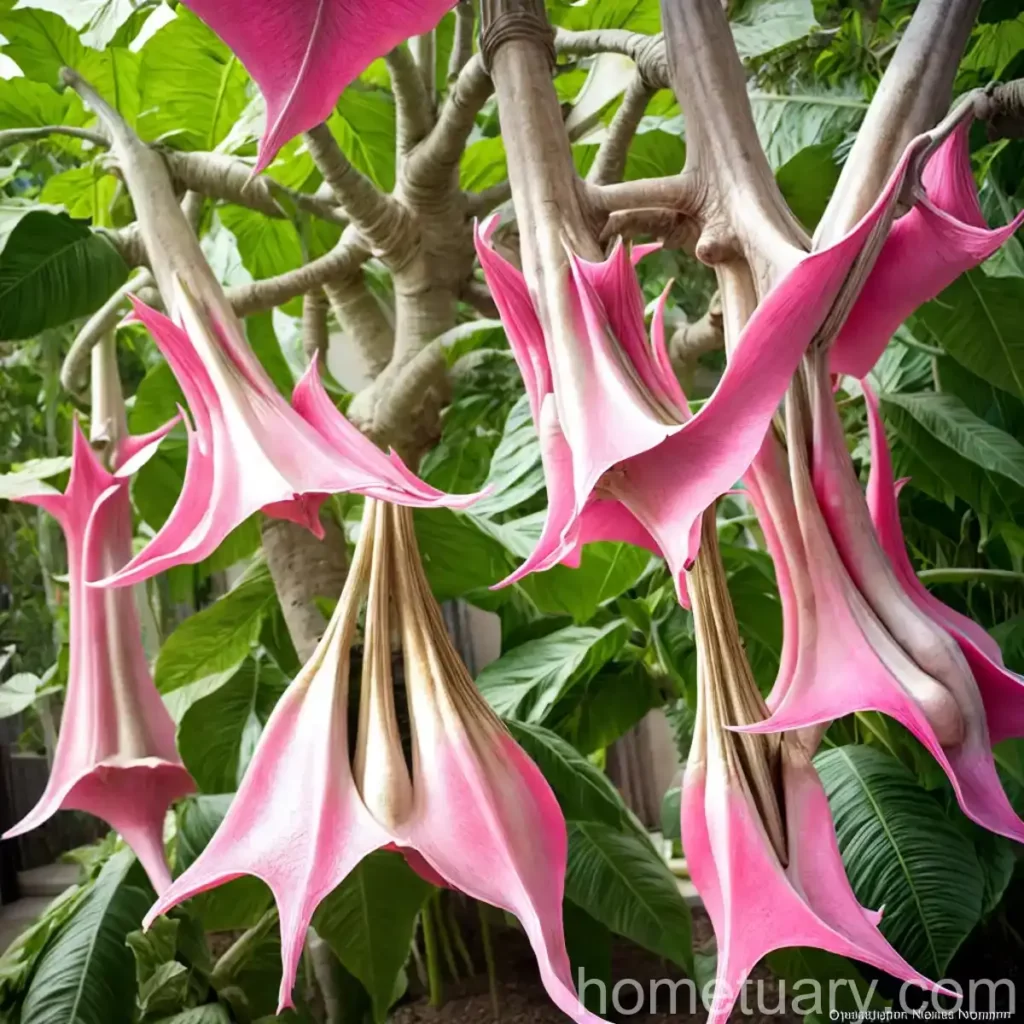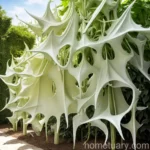Brugmansia (Brugmansia ‘Pink Perfume’): A Complete Guide
Brugmansia, commonly known as Angel’s Trumpet, is a spectacular flowering plant with beautiful, pendulous flowers. In this comprehensive guide, we will delve into the key aspects of Brugmansia ‘Pink Perfume’, including its culture, uses, care requirements, and propagation techniques. As a plant scientist and enthusiast, I am excited to share insights and tips for successfully growing and caring for this stunning plant.
Plant Name: Brugmansia (Brugmansia ‘Pink Perfume’)
What is Brugmansia (Brugmansia ‘Pink Perfume’)?
Brugmansia ‘Pink Perfume’ is a cultivar of the Brugmansia genus, distinguished by its enchanting pink, fragrant flowers. This tropical plant belongs to the Solanaceae family and is native to South America. The genus Brugmansia encompasses several species and hybrids, all of which are treasured for their large, trumpet-shaped flowers and sweet fragrance.
Key Takeaways – Brugmansia (Brugmansia ‘Pink Perfume’):
– Brugmansia plant care: Understanding the specific care requirements for Brugmansia ‘Pink Perfume’.
– Pink Perfume Brugmansia: Exploring the unique characteristics of the Pink Perfume variety.
– Brugmansia Pink Perfume care guide: Providing a comprehensive guide for caring for this beautiful cultivar.
– Common issues with Brugmansia: Addressing potential challenges and issues with growing Brugmansia plants.
Let’s explore the culture, uses, and essential tips for tending to Brugmansia ‘Pink Perfume’.
Culture of Brugmansia (Brugmansia ‘Pink Perfume’)
Water
Brugmansia plants thrive in moist, well-draining soil. Adequate watering is essential to maintain the right soil moisture level for these tropical beauties. During the growing season, it’s crucial to water the plants regularly, ensuring that the soil remains consistently moist but not waterlogged. However, it’s equally important to allow the soil to dry slightly between watering sessions to prevent root rot.
- Watering frequency: Water your Brugmansia ‘Pink Perfume’ when the top inch of the soil feels dry to the touch.
- Watering method: Water the plant thoroughly, ensuring that excess water drains out of the pot.
Sunlight
In their natural habitat, Brugmansia plants thrive in partially shaded areas with dappled sunlight. When cultivating Brugmansia ‘Pink Perfume’, it’s important to provide the right balance of sunlight to encourage healthy growth and abundant flowering.
- Sunlight preferences: Choose a location that receives partial sunlight, with protection from intense midday sun.
- Extremes to avoid: Protect the plant from harsh afternoon sun, which can cause leaf burn and excessive wilting.
Fertilizer
Feeding Brugmansia ‘Pink Perfume’ with a balanced fertilizer is vital for supporting its lush foliage and prolific flowering. During the active growing season, regular fertilization can significantly enhance the plant’s overall vigor and bloom production.
- Fertilization schedule: Apply a balanced, water-soluble fertilizer every 2-3 weeks during the growing season.
- Fertilizer type: Choose a fertilizer with a balanced NPK ratio, such as 10-10-10 or 20-20-20, to provide essential nutrients.
Soil
Providing well-draining, nutrient-rich soil is crucial for the health and development of Brugmansia ‘Pink Perfume’. A loose, organic potting mix that retains moisture without becoming waterlogged is ideal for supporting these tropical plants.
- Soil composition: Use a mix of peat moss, perlite, and compost to create a well-draining, nutrient-rich soil blend.
- pH level: Aim for a slightly acidic soil pH ranging from 5.5 to 6.5 for optimal growth.
Pruning
Regular pruning is essential for shaping and maintaining the desired size and form of Brugmansia ‘Pink Perfume’. Pruning also helps to remove dead or damaged branches, promoting overall plant health and vigor.
- Pruning technique: Use clean, sharp pruning shears to make clean cuts just above a leaf node or a lateral branch.
- Timing: Prune your Brugmansia ‘Pink Perfume’ in early spring before the onset of new growth to encourage branching and flowering.
Propagation
Propagating Brugmansia ‘Pink Perfume’ can be achieved through various methods, including stem cuttings and air layering. This allows enthusiasts to expand their collection or share the beauty of these plants with others.
- Stem cuttings: Select a healthy, non-flowering stem, and propagate it in a moist, well-draining medium to encourage root development.
- Air layering: Encourage the formation of roots on a section of the plant’s stem by wrapping it with a moist medium and waiting for the roots to develop before separating it from the parent plant.
Container Popularity
The popularity of cultivating Brugmansia ‘Pink Perfume’ in containers stems from its versatility and the ability to control its growth and environmental conditions. This makes it a favored choice for gardeners with limited space or those seeking to bring tropical charm to their outdoor or indoor spaces.
- Container size: Choose a container that provides ample room for the plant’s root system while allowing for sufficient drainage.
- Portability: Container-grown Brugmansia plants can be moved indoors during colder months in regions with frost.
Common Diseases
While Brugmansia ‘Pink Perfume’ is generally resilient, it can be susceptible to certain diseases and issues that can affect its overall health and flowering performance. Here are some common diseases and issues to be mindful of:
Disease Diagnosis
- Powdery mildew: A fungal disease characterized by a powdery white coating on leaves and stems, leading to leaf distortion and reduced vigor.
- Botrytis blight: This fungal disease causes rotting of flowers and buds, often triggered by high humidity and poor air circulation.
Common Pests
Brugmansia plants may attract certain pests that can compromise their health and beauty. Vigilance and prompt intervention can help in addressing pest infestations effectively.
- Aphids: These tiny, sap-sucking insects can cluster on new growth, causing leaf distortion and weakening the plant.
- Spider mites: These minuscule pests can infest the undersides of leaves, causing stippling and webbing.
Botanist’s Tips
As a plant scientist, I recommend the following tips for successfully cultivating and caring for Brugmansia ‘Pink Perfume’:
- Monitor soil moisture: Regularly check the soil moisture level to avoid overwatering or allowing the soil to dry out excessively.
- Provide adequate support: Due to the plant’s pendulous flowers and potentially large size, providing staking or support can prevent stem breakage and enhance its ornamental appeal.
- Regular inspection: Be proactive in inspecting the plant for signs of pests or diseases, addressing any issues promptly to prevent escalation.
Fun Facts
- Brugmansia flowers are known for their intense and captivating fragrance, especially in the evening, attracting pollinators such as moths and bats.
- Some species of Brugmansia have a long history of traditional medicinal uses in certain South American cultures.
Links to External Resources
- Brugmansia: A comprehensive guide
- Illustrated guide to Brugmansia care
- Understanding and growing Angel’s Trumpets
- Brugmansia care tips from experienced growers
In conclusion, Brugmansia ‘Pink Perfume’ is a captivating and rewarding plant to grow, adding a touch of exotic beauty and fragrance to outdoor and indoor settings. With a good understanding of its culture, care requirements, and propagation techniques, enthusiasts can enjoy the enchanting blooms and lush foliage of this tropical gem.
Remember, the key to successful Brugmansia cultivation lies in providing the right balance of water, sunlight, nutrients, and proactive pest and disease management. By incorporating these insights and tips, you can nurture healthy, thriving Brugmansia ‘Pink Perfume’ plants that bring joy and beauty to your gardening endeavors.
Happy gardening!















